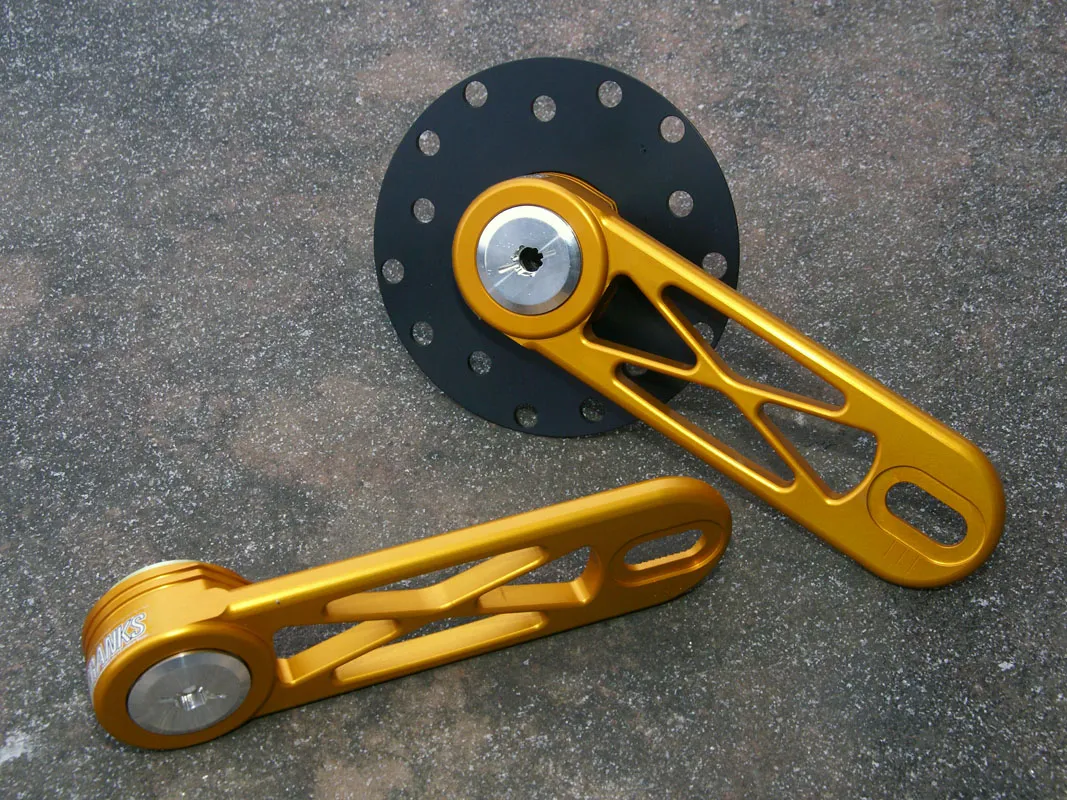More often than not, new bicycle purchases are all about instant gratification: lighter weight, faster speeds, better aesthetics, smoother running. But in the case of Powercranks, you pay an awful lot of money for an ungainly-looking boat anchor of a crank that's exceedingly frustrating to ride at first.
However, we've come across no other piece of equipment that's so effective at improving your pedal stroke – provided you're willing to put in the requisite training time.
Dual one-way clutches allow each crankarm to operate fully independently, meaning both arms can freewheel backwards on their own and your downward leg can't help the upward one during a pedal stroke. As such, it's solely up to you to keep your feet moving in circles and the two crankarms in alignment. Easy, right? Think again.
Our first rides on the Powercranks were done indoors in late winter 2008 and were an exercise in humility. Whereas we could normally head out for six hours, we could only maintain pedal alignment on the Powercranks for about 15 minutes before our hip flexors and shins were utterly shattered.
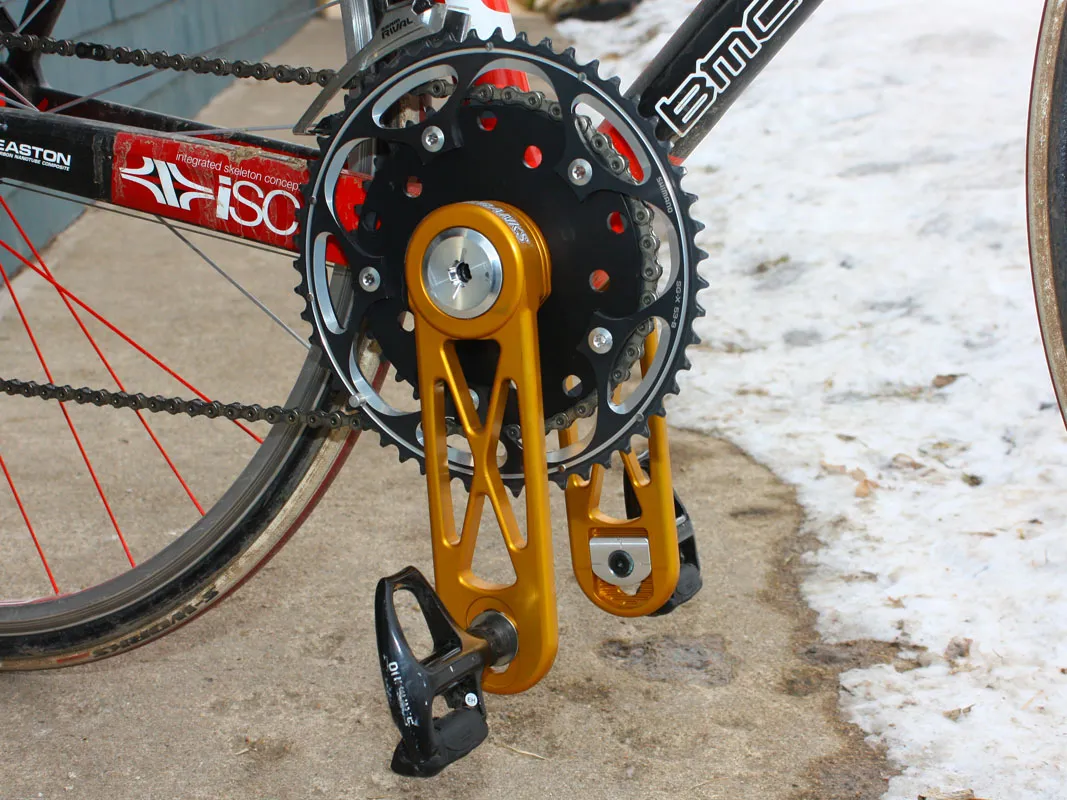
However, we immediately noted that the cranks highlighted deficiencies in what we previously thought was a very smooth and even pedal stroke. Specifically, we discovered issues coming up and over the top on the left side, and different upstroke speeds between the two sides in general, due to a previously hidden muscular imbalance.
Even just a week of regular use on the trainer began to even out those differences and we eventually built up to a 45-minute threshold, so out we went for a quick sub-hour loop. Ever tried getting started from a standstill with both pedals swinging freely at the 6 o'clock position? Neither had we, and not surprisingly traffic lights proved challenging, as were corners where we had to consciously hold our inside foot up and away from the pavement. Ditto for out-of-saddle pedalling, which was particularly comical until we got the timing right.
We eventually settled into a rhythm, though, and things began to feel more natural aside from the fact that we couldn't maintain as high a cadence as usual and a normally modest pace suddenly felt like an awful lot of work. Still, an hour was about our limit for nearly a month before our hip flexors, hamstrings and shins built up to the task and it was a full two months before we could ride the Powercranks with any semblance of normality.
So why bother, you ask?
Later on we gradually weaned ourselves off the Powercranks and regularly swapped back and forth onto standard, fixed cranks. In addition to feeling worlds easier, the obvious changes were a much improved pedal stroke overall and the ability to maintain a faster cadence with less bouncing in the saddle.
Were we faster as a result? Unfortunately, a single-user test format like this makes it impossible to separate the effects of using Powercranks versus simply riding more, as we were. Intuitively, a smoother and more efficient pedal stroke should yield more speed with lower energy consumption, and after using Powercranks for several months, we certainly felt lighter on our feet.
It's worth noting, however, that Powercranks' effectiveness – ie. whether or not they actually make you faster – is still very much a topic of debate in the scientific community. In short, no one seems to be able to prove without a reasonable doubt that a smoother stroke really does equate to a more powerful one.
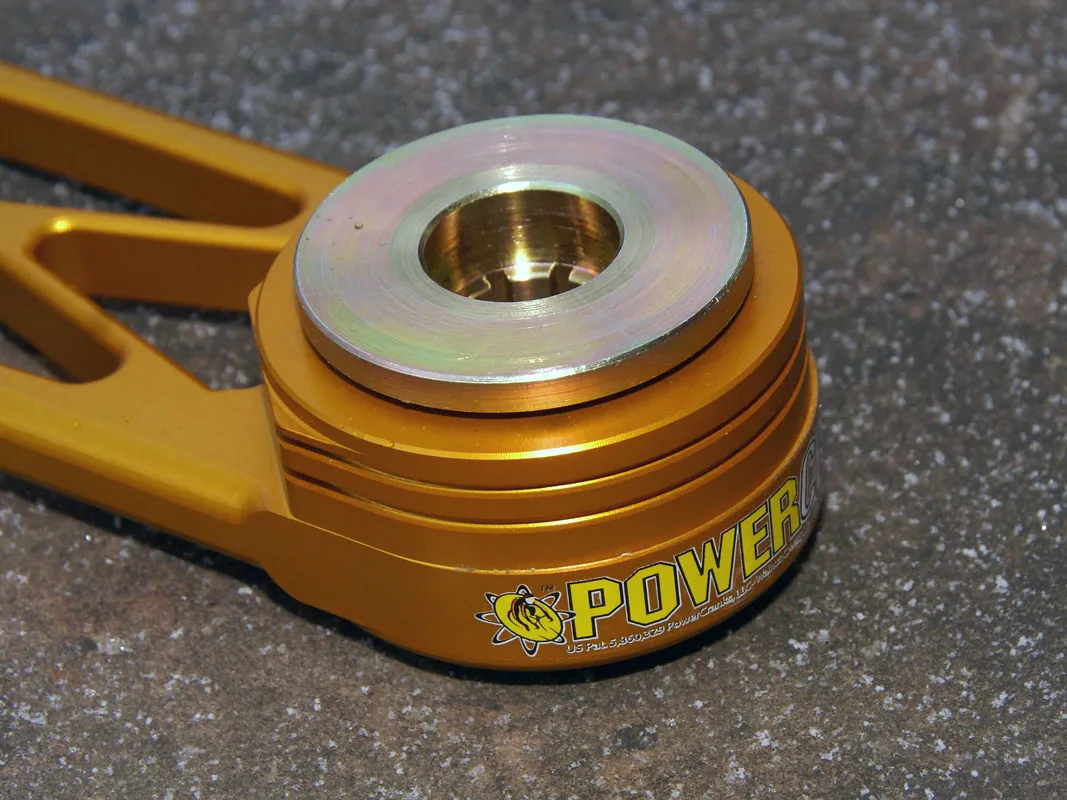
"Cycling power is all derived from extension, or the contraction of quadriceps and gluteals," says Boulder Center for Sports Medicine cycling biomechanist Sean Madsen. "Quads extend the knee; glutes extend the hip. Many EMG [electromyography] studies have been performed to show this. So if the vast majority of our cycling power is derived from extension, the flexion muscle groups' (hamstrings, psoas and gastrocnemius/sloeus) primary purpose are to recover the leg and get ready for extension again.
"There can be very little 'positive' force, or force that propels a bike forward, on the 'backside' or flexion phase of the cycling stroke. Any positive force on the backside of the pedal stroke is grossly outweighed by the positive force on the power phase or extension of the other leg. Accentuating a weaker part of the pedal stroke, ie. pulling up on the backside, is not an effective use of available power.
"The flexion group is definitely weaker than the extension group, typically only 60-70 percent as strong. So, emphasis of a weaker muscle group, either by consciously pulling up on the backside of the pedal stroke or being positioned too far aft, won't lead to increased cycling power."
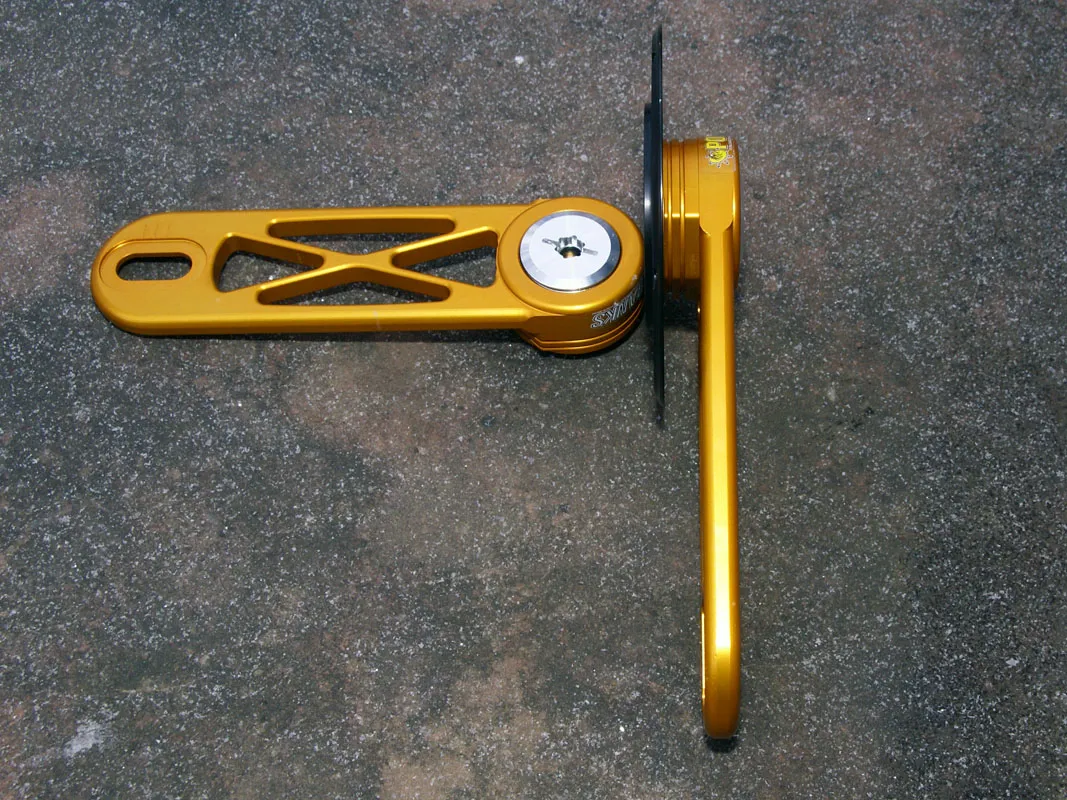
Still, Madsen admits that the subject is anything but settled and that more rigorous studies need to be performed. "Is it more effective to spin a smooth circle or mash?" he asked. "The answer is... I don't know. Defining pedalling efficiency is a difficult task. What is the metabolic cost of emphasising weaker muscle groups versus just concentrating on the prime movers?
"If you look at the pedal revolution as a sine wave (degrees of revolution on the X axis and force applied on the Y axis) you see peaks of high power and valleys of less power. Mathematically, you can improve efficiency by decreasing the amplitude of this sine wave: make the valleys less low and you don't have to use as much maximal power per revolution. This is the effect that pedalling in circles is trying to achieve.
"The undefined thing here is that in doing this you are actually increasing the usage of muscle groups that can't contribute a significant positive force in pedalling. How much can you recruit these ancillary muscle groups without sacrificing the power generation of the main muscle groups? I don't know."
Theory and various disputed scientific studies aside, one other interesting fact is the number of pros who are reportedly training on these (including a multi-time US national champion, a now-retired Paris-Roubaix winner and a perennial grand tour contender), albeit in secret as the supposed Powercranks riders we contacted either categorically denied using them or simply didn't respond. Whether that was due to sponsorship conflicts or a desire to keep a 'secret weapon' to themselves is impossible to say but noteworthy nonetheless.
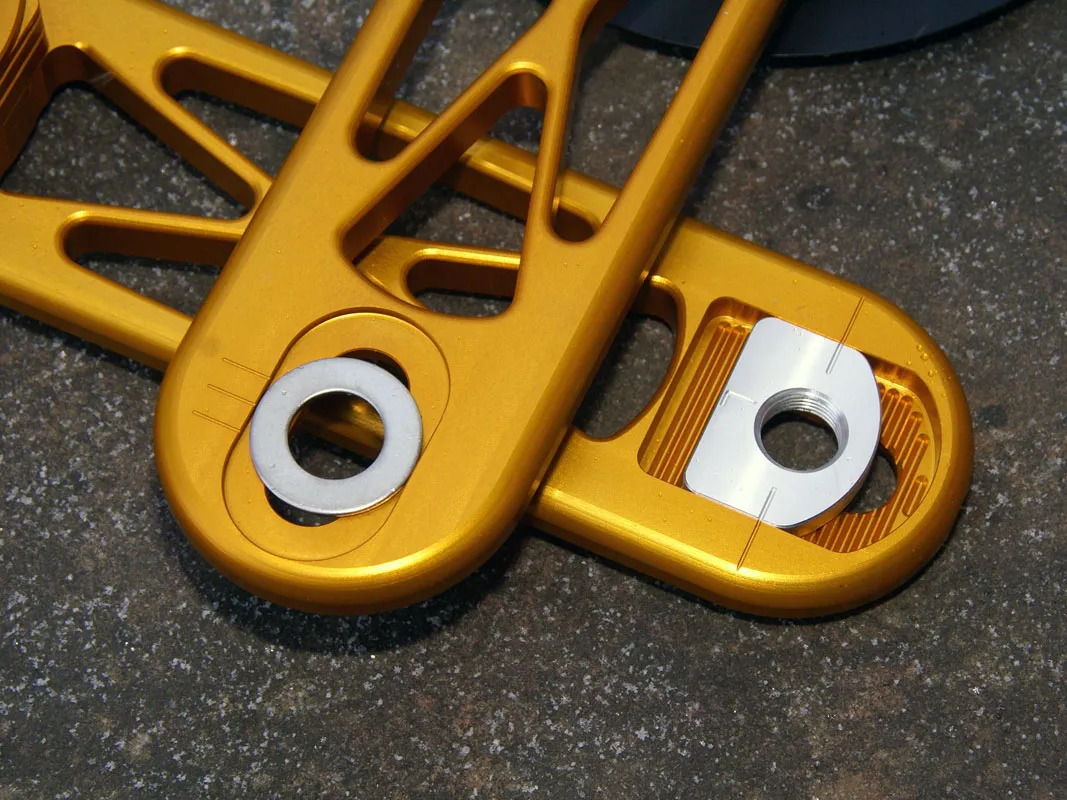
Heavy but well built
There are no two ways around this: Powercranks are heavy, and even our milled-out X-Lite version weighs a substantial 1,374g without the requisite old-school bottom bracket or chainrings, neither of which are included in the US$1,199 asking price.
Most of the weight is centred on the clutch mechanisms with their steel cores and rows of needle bearings but the massive 7,000-series aluminium arms don’t exactly help. Powercranks doesn't intend for these to be used for racing, though, so in that respect the extra mass can be viewed as simply another training aid.
To maximise the versatility, the effective crankarm length is adjustable from 165-182.5mm and the disc-shaped chainring spider is drilled for all three major bolt patterns – Campagnolo (135mm), Shimano/SRAM/FSA standard (130mm) and compact (110mm). The compact one requires the use of additional washers, however, which negatively affects the chainline so we don't recommend using it.
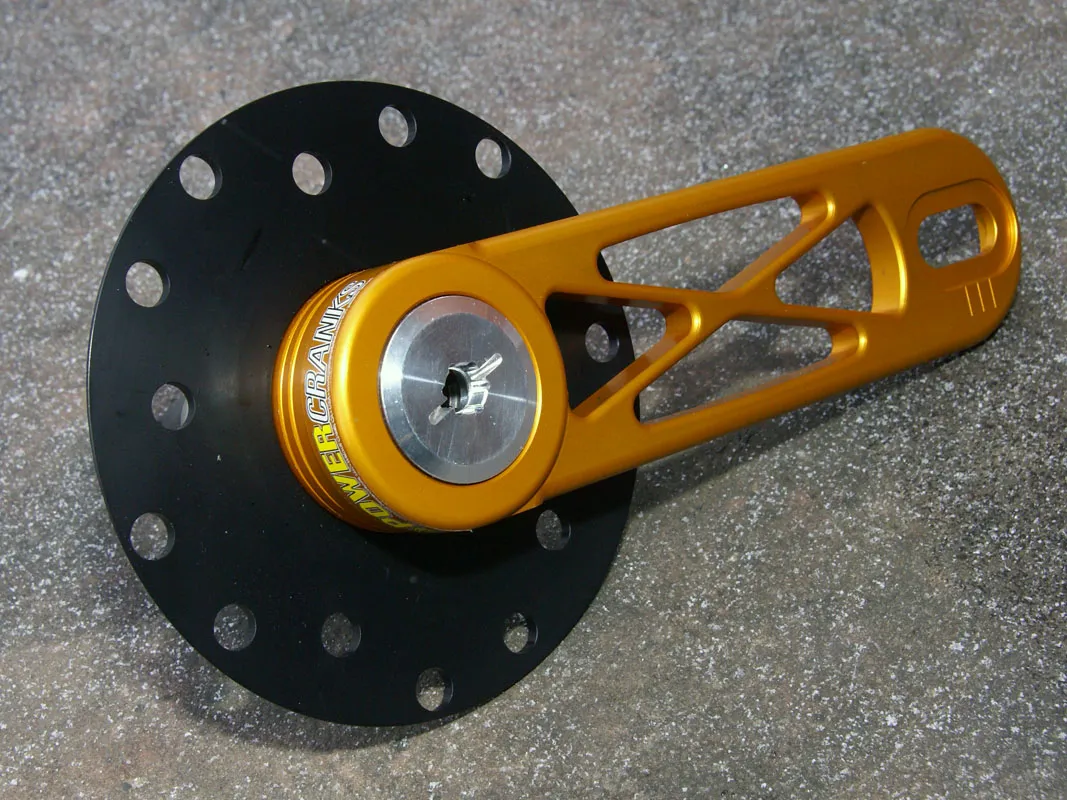
Installation is straightforward enough though not entirely business as usual given the one-way clutch mechanisms but the detailed instructions do a good job of walking you through the process.
Overall build quality is very high with both clutches holding up well during our lengthy test period with no slop, slip or appreciable wear to note. Servicing the clutches is a shockingly simple process (simply unscrew the outer caps and pull the arms off) but potential buyers in wet climes will want to note that the mechanisms aren't sealed well so you'll likely have to do it fairly often.
Lots of pain at a high price but potentially a lot of benefit, too
Whether or not the Powercranks make sense to you will depend on how much importance you place on your physical performance as a rider. Similar money spent elsewhere will undoubtedly net you a heady amount of flash but the Powercranks will actually improve the engine, not just the machine – and despite the controversy surrounding the improved power output, the effect on pedalling smoothness is undeniable.
The price of entry is very high (stick with the standard version instead of the X-Lites), the learning curve slow and painful, and you'd better be prepared for some ridicule from your mates – but if you're willing to deal with the hurdles there's a tangible payoff at the end.
